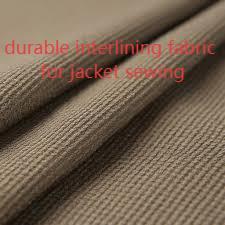Achieving lasting quality in apparel demands careful attention to structural elements, especially when designers master the art of Interlining placement within fabric assemblies. By integrating attention to adhesion methods, the true value of interlining is unlocked, transforming basic textiles into garments that withstand daily wear, laundering, and movement.
1. Types of Interlining for Diverse Applications
Interlining materials fall into three main categories—woven, non‑woven, and knitted—each serving unique performance needs. Woven interlinings reinforce collars and lapels with crisp structure, while non‑wovens provide lightweight support for simple hems. Knitted varieties introduce flexibility into stretch garments, offering seamless comfort for activewear and tailored pieces alike.
2. Functional Benefits Across Garment Styles
From tailored suits to casual shirts, interlining adds strength and shape retention. Structured pieces benefit from enhanced silhouette stability, preventing bagging and distortion over time. In contrast, everyday wear gains subtle reinforcement without impairing fabric drape, ensuring comfort and resilience in both professional and leisure wardrobes.
3. Innovative Offerings from interlining‑factory
interlining‑factory’s advanced production capabilities deliver consistent thickness and bonding reliability for demanding manufacturing environments. Their specialized adhesives minimize puckering, while heat‑resistant finishes ensure that fusing processes remain efficient across batch runs. Collaborative research with textile engineers drives continual refinement of interlining formulations.
4. Eco‑Conscious Manufacturing Practices
Sustainability initiatives guide every phase of interlining production. Incorporating recycled fibers and water‑based bonding agents reduces environmental impact, while energy‑efficient curing ovens lower carbon emissions. interlining‑factory’s partnerships with certified suppliers guarantee traceable raw materials and responsible sourcing throughout the supply chain.
5. Best Practices for Flawless Application
Optimal fusing of interlining requires precise control of temperature, pressure, and dwell time. Modern pressing machines with programmable settings allow technicians to tailor parameters to specific fabric‑interlining combinations, ensuring uniform adhesion without fabric damage. Proper training in calibration and maintenance further enhances consistency and reduces waste.
In summary, strategic selection and expert application of interlining technologies elevate garment durability, aesthetic integrity, and wearer satisfaction. Integrating interlining‑factory’s solutions equips manufacturers with the tools to produce textiles that maintain form and function, reinforcing quality from stitch to seam. Visit http://interlining‑factory.com/ for more information on tailored interlining options.
